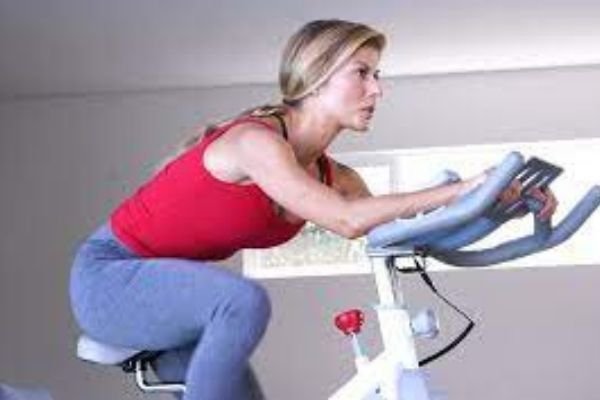How to Choose the Best Indoor Cycle Trainer

Bike Trainer Buying Advice – Magnetic, Fluid, Roller, Computrainer
Choosing the best indoor cycle trainer can be difficult due to the wide range of brands, styles, features, and price points. Here’sHere’s a guide to help with decision making.
In its simplest form, a cycling trainer is a bike stand with a rear-wheel mount that lifts the wheel off the ground to allow stationary cycling.
It’s perfect for an indoor cycling workout when it’s cold, wet, and windy outside or when long winter nights make it too dangerous to ride on the road.
Prices range from as little as $150 to over $2000 for sophisticated camp trainers, so it’s essential to identify what type of training and resistance level is required before looking at any products; road racers.
For example, it will probably require a cycle trainer with high resistance levels. A recreational rider may simply be looking for an entry-level bike trainer as a cheap alternative to buying a stationary indoor exercise bike.
Types of Bike Trainer
There are two bike trainers or turbo trainers; mechanical resistance cycle trainers where the rear wheel is locked and roller trainers are simply standing with rollers. The latter are tricky to use (falling off is inevitable as there is no frame to hold the bike vertical), but they are relatively cheap.
Resistance trainers with a frame to secure the back wheel are the preferred option for a first-time buyer and come with three styles of resistance mechanism:
- Wind trainers – a fan provides a cheap but relatively low level of resistance; this type of cycle trainer can be boisterous.
- Magnetic bike trainers – wheels are restricted from turning via adjustable magnets, offering a quieter ride. Resistance levels are more significant than wind models but very fit riders may pedal too hard, causing the magnetic resistance to slip, a bit like gears slipping on the open road.
- Fluid trainers – a tranquil ride is provided by a turbine offering non-slip resistance within a silicon fluid-filled casing. Fluid trainers are more expensive than magnetic or wind options.
Magnetic, fluid, and wind resistance trainers are easy to set up. They require no power supply, so they are also easy to transport, an essential requirement for keen racers who use them for pre-race warm-up sessions in addition to winter indoor training programs.
Computrainers
Electronic turbo trainers are sophisticated pieces of equipment that, while expensive, offer key benefits versus cheaper resistance models:
- Precise control over training workouts through accurate resistance control, specific power output targeting, and incline settings.
- Comprehensive statistical feedback – heart rate, cadence, speed, ride time, ride distance, and more.
- Cycling training software allows riders to compete against others or beat personal bests for a particular course; given that indoor cycling can become tedious, keeping the rider amused should not be underestimated.
Key Indoor Cycle Trainer Brands
Tacx has a good quality range of affordable sub $200 cycle trainers, including the economic Sirius model, highly rated online reviews at Chain Reaction Cycles. Cycleops are more expensive but have an excellent range of fluid trainers between $200 and $300 plus a top-of-the-range pro trainer called the Power beam. Other brands to consider are Elite, Minoura, Wattbike, and Computrainer.
Tips for Indoor Cycle Training
- Use a non-slip bike trainer mat to prevent the stand from slipping and to protect floors from potential damage; liquid can leak from fluid trainers, for example.
- Energetic riders can get very hot when training indoors, so buy a large fan to keep cool.
- Purchase a riser block for the front wheel to prevent “downhill” riding or provide a more challenging workout if using several blocks stacked on top of one another.
Buying a Cycle Turbo Trainer
Decide on the preferred type of resistance mechanism and how many features are likely to be required before reading reviews and checking prices online. Keen or easily bored riders may need the benefits offered by an expensive computrainer. Still, for a few months of indoor training, a low-cost resistance model is probably the best indoor cycle training option.





